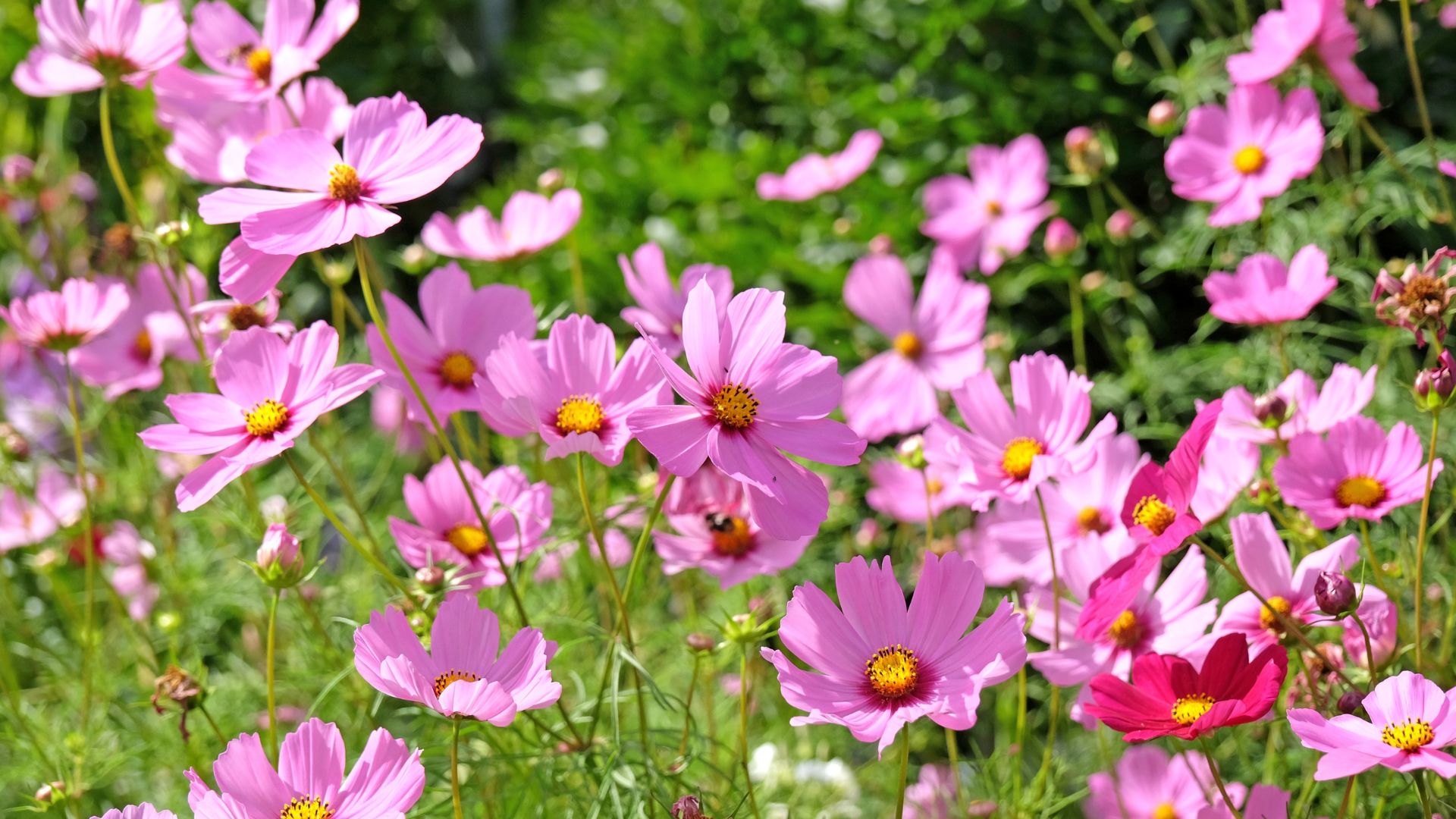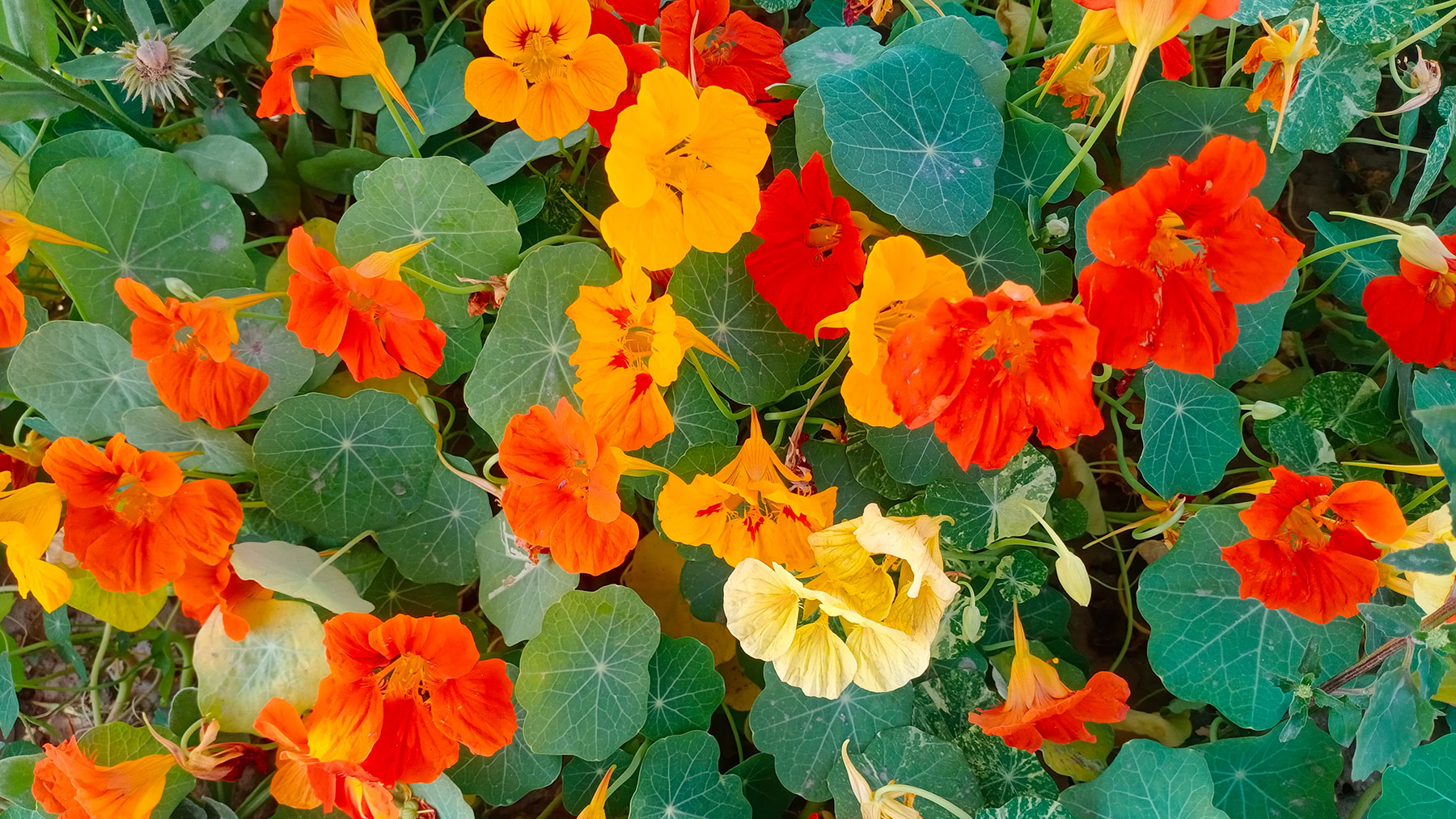7 flower seeds to sow in July for bountiful blooms
Plant these 7 flower seeds for a vibrant yard all year round

Summer is a great time to enjoy the fruit of your gardening labors, especially when it comes to vibrant flowers in the backyard. But if you haven’t quite finished planting the garden, don’t fret. There are several different flower seeds that you can sow in July and begin to enjoy before the summer reaches its end.
You just need to know which plants to grow, to ensure happy flowers and a healthy garden. While many plants enjoy milder conditions in spring, others thrive in the warmer months and will bloom well into the autumn. This is also a great option to consider if you have a lot of springtime flowers that will start to die later in the summer.
Read on for seven different flowers that all thrive when planted in July, and take a look at our guide to different gardening zones if you want some help in determining which flowers are right for your yard.
You might also be interested in 11 vegetables to plant in July.
How to get the most out of your summer seeds
Flowers that grow during the summer tend to be fast-growing to maximize their blooming season before the temperatures drop. That said, the hotter conditions of summer may require you to approach your planting a little differently. Delicate flower seeds may need to be planted in shady conditions initially, so that they can grow without harsh direct sunlight. Once they have taken root and become more established, you can move them to a container or sunnier patch of your yard. Another alternative is to use a temporary shade cover during germination to promote healthy growth.
For the best success, choose summer flower seeds that suit the conditions of your garden, such as sun exposure and soil type. Well-drained soil is a consistent factor for plant health, so make sure you have adequately prepared your garden soil before you plant. Overly wet soil can encourage root rot and disease, but this should be easier to avoid during warm weather. Just make sure you don’t overcompensate with watering!
1. Zinnias

Zinnias come in many different vibrant colors and can add important visual interest to summer gardens. While you can plant these flowers in the spring, zinnias love the heat and do just as well when planted later in the year, including the month of July. This plant is known for attracting insects and birds to a garden, which is important for effective pollination, the local ecosystem and keeping unwanted pests at bay. By planting zinnias in July, you ensure that your yard will enjoy these benefits through September, as zinnias planted in the spring will have died before then. While this flower enjoys full sun when full grown, consider germinating the seeds in the shade, perhaps in containers for easy transportation, to give them their best chance at maturing in a healthy way.
Get instant access to breaking news, the hottest reviews, great deals and helpful tips.
Preferred sun exposure: Full sun
Preferred soil type: Well-drained, average soil
Planting zone: 2-11
2. Cosmos

Cosmos are particularly fast growing, with some varieties able to bloom in as little as 45 days after planting. That means that if you scatter your seeds in early June, you’ll be able to enjoy these bright orange and yellow blooms by mid-August. This plant is also quite hardy, especially the sulfur species, so you can be confident that it will withstand the summer heat. It’s also known as the Mexican aster and enjoys hot, arid conditions. For the best success, plant the seeds before a good rain is expected to ensure that seeds are adequately watered. Soil should be prepped beforehand but otherwise this is a hands-off plant that you can enjoy throughout the late summer.
Preferred sun exposure: Full sun
Preferred soil type: Well-drained soil
Planting zone: 2-11
3. Sunflowers

You’ve probably been spotting sunflowers for several weeks now, but these sun-loving plants are just as well-suited to late summer conditions as they are to spring. The only thing to note is that if you’re planting these flowers in July, you need to ensure they will have good southern exposure as the sun’s rays will begin to shorten and weaken after the summer solstice on June 20th. If planted appropriately, sunflowers will be able to bloom in about 8 weeks, with some flowering as early as 53 days after planting. If you want a faster-growing species then look for dwarf varieties and if your garden often experiences early frosts then opt for seeds labeled hardy or half-hardy.
Preferred sun exposure: Full sun
Preferred soil type: Well-drained, loamy / sandy loam / loamy clay soils
Planting zone: 4-9
Sow Right Seeds - Mammoth Sunflower Seeds: $4.49 @ Amazon
A lot of sunflower seeds are sold for eating, but rest assured that with an average rating of 4.4 stars out of nearly 6,000 reviews, these Sow Right seeds are perfect for a bumper crop.
4. Marigolds

Marigolds don’t just add beautiful splashes of orange, yellow and gold to your garden but they can even help you improve the soil. While it is possible to plant these flowers in the spring, sowing the seeds in warmer weather allows you to plant them directly into the soil and bypass container planting altogether. Some varieties will bloom in as little as 6 weeks, but others are known to wait until the cooler autumn months to fully show all their golden glory – which can be a great refresh to your garden, as most of your other flowers will likely have fallen by then. Many gardeners like to grow their marigolds alongside tomato plants, another summertime favorite, as the spicy scent of the flowers will keep tomato pests at bay. However, you can plant them with whichever plants you like; just make sure the soil is well-drained.
Preferred sun exposure: Full sun
Preferred soil type: Well-drained soil
Planting zone: 2-11
5. Nasturtiums

This is one of the few plants that actually grows better when planted in late July, as opposed to the beginning of the month. This is because nasturtiums enjoy warm soil but don’t like oppressive heat, so planting in late July gets you the benefits of warm weather but also less harsh sunlight. These flowers can also be grown in partial sun, if you have some areas in your backyard that are less exposed to sunlight. To promote quick growth, soak the seeds in water overnight before planting and don’t over-fertilize the soil; this will reduce the number of flowers you get and instead promote leaf growth. Nasturtiums can also be eaten, so consider using petals as a salad ingredient or a garnish. If treated correctly, you’ll be able to enjoy these orange and yellow flowers well into autumn.
Preferred sun exposure: Full or partial sun
Preferred soil type: Well-drained, sandy or loamy soil
Planting zone: 9-11
5. Calendula

The calendula plant is a quick blooming species that can flower in as little as six weeks, so it’s a great option for late summer planting. As with some of the other plants on this list, you should plant the seeds in a shady area and only move to a flower bed or container once the worst of the summer heat is over. The blooms of the calendula are orange and almost fluffy in quality, but this is also known to be a leggy plant. If you want ground cover, then let the plant sprawl across the ground – this can be an effective way to prevent weeds from getting established in your flower beds. However, if you want a more contained, shrub-like bush then pinch back the new growth to discourage excessive sprawl. There are also taller varieties which are better suited to cut flowers than their shorter counterparts.
Preferred sun exposure: Full or partial sun
Preferred soil type: Well-drained soil
Planting zone: 9-11
7. Morning Glories

Morning glories are some of the only plants on this list whose blooms aren’t orange or yellow in color, but instead are purple, blue and pink in color. This is a tropical vining plant that will weave attractively across a wall or trellis, producing flowers in as little as 65 days. Because of its preference for heat but also rain, make sure you soak the seeds in water for 48 hours before planting, changing out the water every 12 hours. You don’t need to begin with an indoor container and can sow the seeds directly into the soil. This will help to promote healthy germination and speed up the growth timeline. Morning glories get their name from their blooming schedule; the flowers open up in the morning and fall by nighttime. However, keep in mind that this plant drops its seeds quickly and that these seeds are toxic, so they shouldn’t be grown within reach of pets or other household animals.
Preferred sun exposure: Full sun
Preferred soil type: Moist, loamy or sandy soil
Planting zone: 2-11
More from Tom's Guide

Despite making her home in urban metropolises, Madeleine Streets has been nurturing a green thumb for decades.
Raised by a garden designer, she is putting that childhood education to use by helping others learn how to make their garden bloom, while filling her own New York home with cat-friendly plants.
When not writing about gardening and the outdoors, Madeleine loves to cook, study wine and borrow books from her local library.

